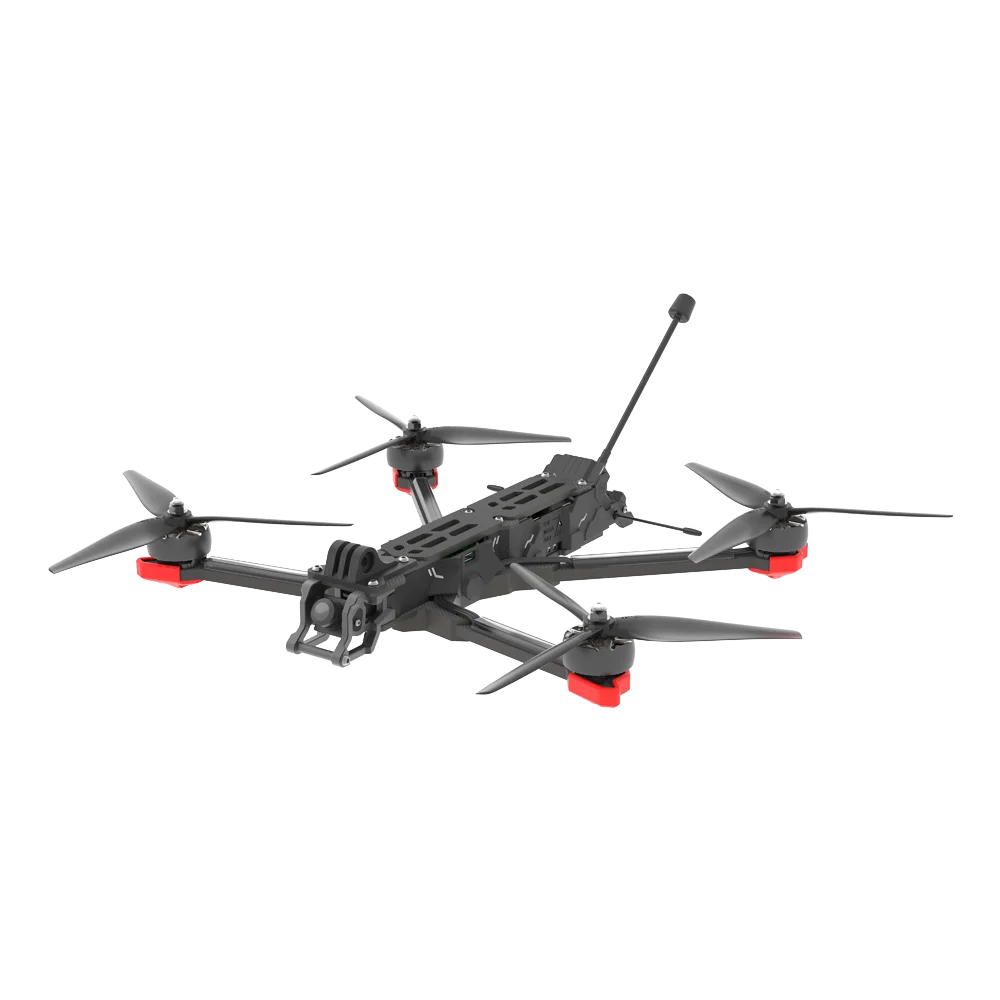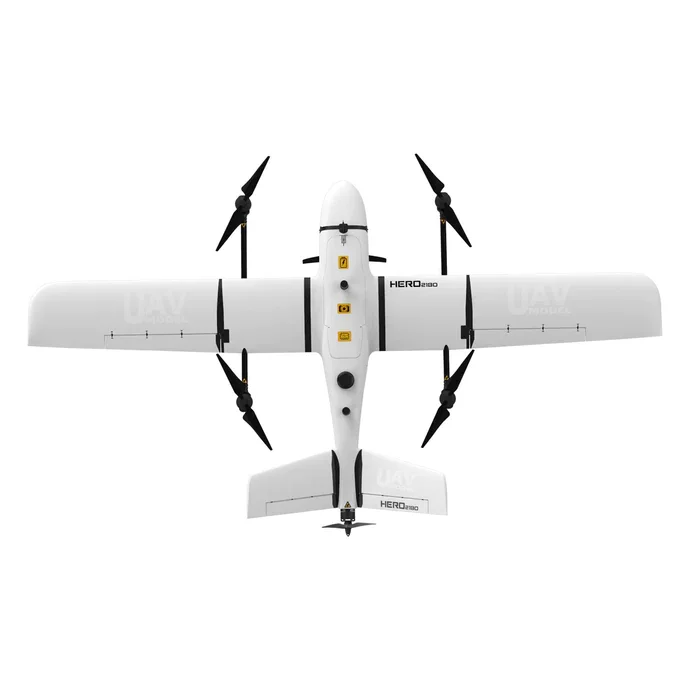The journey of drone technology began in the military and research sectors, where early unmanned aerial vehicles (UAVs) showed promise for surveillance and reconnaissance missions. Initially, these drones were manually controlled and had limited scope, mainly used for gathering intelligence without risking human lives. Over the years, their utility expanded, driving innovations that led to the emergence of more sophisticated models.
The development of autonomous drones marked a significant leap forward. These drones can execute missions with minimal human intervention, fostering enhanced operational efficiency across various sectors. According to a recent market analysis, the global autonomous drone market is projected to grow considerably, driven by industries like agriculture, logistics, and defense that are integrating these advanced UAVs. Statistics reveal a compelling compound annual growth rate (CAGR), reflecting the increased adoption of these autonomous devices in diverse applications.
Crucially, advancements in artificial intelligence (AI) have further augmented drone capabilities. AI integration allows for enhanced navigation, sophisticated obstacle avoidance, and real-time data analysis. For example, drones equipped with AI can autonomously navigate through complex environments, perform precision agriculture tasks, and analyze vast datasets to generate actionable insights. This AI-driven evolution is reshaping industries by offering smarter, faster, and more efficient aerial solutions. Major players, such as ZenaTech and Draganfly, continue to push boundaries by innovating AI-enabled drones, highlighting the transformative potential of these technologies in various fields.
Agriculture drones are transforming precision farming by providing real-time data for crop monitoring and management. These drones are equipped with multispectral sensors and imaging technologies that allow farmers to assess plant health, detect pests, and optimize irrigation. According to a study by Astute Analytica, over 500,000 drones are deployed globally for such tasks, significantly improving crop yield and reducing costs. For instance, drones can reduce fertilizer usage by up to 30% while increasing yields by 25%, demonstrating their value in precision farming.
Drones are revolutionizing the logistics sector by facilitating faster deliveries, especially in urban and remote areas. Companies like Amazon, Walmart, and DHL are pioneering drone delivery systems, enhancing delivery efficiencies and customer satisfaction. These efforts are propelled by the need to overcome traffic congestion and the demand for rapid deliveries. Reports indicate a substantial reduction in delivery times, with drones capable of completing distances in minutes that previously took hours, thus boosting the overall efficiency of the logistics chain.
Drones play a crucial role in emergency response, including natural disaster management and firefighting applications. Firefighting drones, for instance, can fly into dangerous environments, providing crucial surveillance and real-time data to responders. Case studies have highlighted instances where drones have sped up response times, efficiently mapping disaster zones or identifying hotspots in wildfire scenarios. The use of drones in such high-stress situations significantly enhances situational awareness, enabling first responders to execute their duties more effectively and safely.
In today's fast-evolving technology landscape, drones are on the cutting edge of innovation, offering unique features that cater to diverse applications. For instance, the iFlight Chimera7 Pro V2 is renowned for its superior stability and long-range capabilities which cater to both professional and hobbyist needs. This drone includes advanced XING2 motors that boost performance and are optimized for heavy-duty tasks. It is ideal for long-range flights and offers a 7.5-inch propeller control that enhances flight efficiency and smooth operation.

As we look towards 2024, market trends indicate a growing demand for drones with higher payload capabilities and extended flight duration. Innovations in drone technology are not only expanding their physical capacity but also their capabilities, making multi-purpose drones more adaptable across sectors like agriculture, logistics, and emergency response.
One such model is the Multi-purpose Vertical Hero VTOL 2180mm, designed to cater to aerial surveys and monitoring with its versatile payload options, such as orthophoto and tilt cameras. This product demonstrates the growing trend for drones that combine traditional flight capabilities with vertical take-off and landing features, making them suitable for varied terrains and complex operational environments.

Cutting-edge drones are redefining what is possible in technology by meeting the increasing demands across industries. These advancements in innovative drone features not only highlight the pace at which drone technology is evolving but also its potential to transform tasks across various sectors.
Anticipated advancements in drone autonomy are expected to revolutionize aerial applications, with machine learning and AI playing pivotal roles in enhancing decision-making capabilities. AI algorithms empower drones to perform complex tasks independently, such as navigating through challenging environments and avoiding obstacles. These advancements are particularly beneficial in sectors like agriculture, where AI-powered drones can autonomously monitor crops, optimizing resource use for improved yields and reduced waste. Moreover, in emergency services, AI-equipped drones can conduct swift search and rescue operations, identifying individuals in need of help through advanced imaging techniques.
The integration of drones with the Internet of Things (IoT) and Big Data will significantly enhance operational efficiency across various sectors. By linking drones to a network of interconnected devices, real-time data exchange becomes possible, enabling more informed decision-making. For example, in the logistics industry, drones connected to IoT systems can optimize delivery routes, significantly cutting delivery times and costs. Similarly, in environmental monitoring, drones equipped with IoT sensors can relay crucial data about climate conditions, aiding in timely disaster response initiatives.
Drones are also set to contribute to sustainability efforts, given their reduced environmental impact compared to traditional methods. In agriculture, drones minimize the need for heavy machinery, reducing fuel consumption and emissions. In logistical operations, drones can replace long-haul vehicles for certain deliveries, cutting down on fossil fuel reliance. Additionally, the use of drones for surveillance and maintenance in sectors like energy reduces the need for manual inspections, leading to fewer emissions associated with transportation. This drive towards more sustainable practices makes drones an integral part of future eco-friendly strategies across industries.
The drone industry is navigating complex regulatory hurdles which affect its growth potential. According to aviation authorities, these regulations are necessary for safety but can be restrictive, creating barriers for operators and slowing market expansion. For instance, the Federal Aviation Administration (FAA) mandates comprehensive guidelines which many businesses find cumbersome, leading to a slower adoption rate of drone technology compared to other emerging technologies. Statistics reveal that the regulatory constraints reduce the pace of innovation and deployment, which in turn may impact the forecasted market growth.
Privacy and security concerns are major issues affecting public perception and acceptance of drone technology. Surveys indicate a growing apprehension over drones invading privacy and security due to their surveillance capabilities. As experts point out, the challenge lies in balancing drone benefits with privacy rights. This is echoed by public sentiment, with many expressing distrust over data collection methods, necessitating stronger cybersecurity measures and privacy laws to ensure more responsible use of drones.
Despite the challenges, the drone industry holds significant growth potential. Emerging trends are poised to revolutionize how various industries operate. Market projections show that innovative applications will potentially open up new business opportunities, signifying a promising future for both manufacturers and users alike.
 Hot News
Hot News